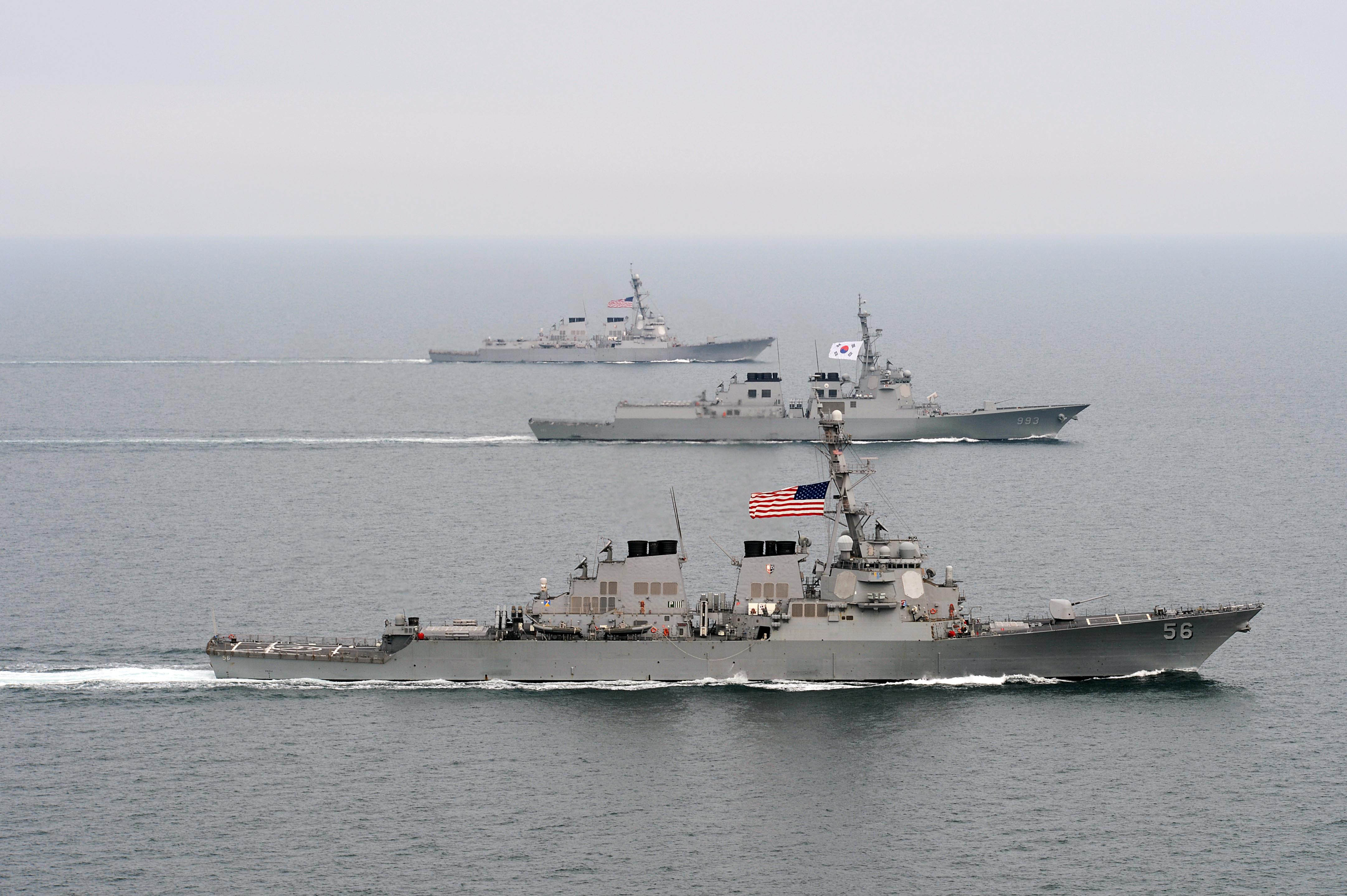
The sea services cannot buy their way to successfully implementing the Cooperative Strategy for 21st Century Seapower, the service chiefs said on Friday. Instead, they will have to pay close attention to how they man, organize and partner with other militaries to ensure they achieve all the capabilities required by the strategy.
In many ways, the strategy “codifies, I believe, what we’re doing in the Navy, especially the organize, train and equip and the deployment,” Chief of Naval Operations Adm. Jonathan Greenert said at a strategy kickoff event cohosted by the Center for Strategic and International Studies and the U.S. Naval Institute. Greenert, Marine Corps Commandant Gen. Joseph Dunford and Coast Guard Commandant Paul Zukunft spoke about how the new strategy relates to their current state of operations and how they’ll continue to advance.
The event was moderated by U.S. Naval Institute board chair retired Adm. James G. Stavridis — former NATO Supreme Allied Commander and head of U.S. European Command (EUCOM).
Dunford said the services have already morphed to address real-world conditions, but the strategy will help them think about further improvements.
For example, Dunford said split Amphibious Ready Group (ARG) operations used to be something the Navy and Marine Corps debated – should a three-ship ARG split up to take on multiple missions in the same combatant command (COCOM), and if so, how would they man, train and equip the ARG to do so? Now, he said, split-ARG operations are “routine,” and disaggregated ARG operations – when the three ships operate in separate COCOMs – are becoming commonplace as well.
Asked how well the Marine Corps’ upcoming budget plans aligned with the strategy, Dunford said, “I think probably one of the key areas that’s not properly aligned and we’ve got to work on is command and control as a whole. This [strategy] implies distributed operations to a degree probably greater than we’ve been doing historically, it’s a trend that’s happened.”
“I’m not satisfied that we’ve actually addressed the organizational implications, the equipment implications and the training implications to fully realize the distributed operations that are captured inside the document,” he continued.
“That’s actually a huge focus for us. It isn’t so much about POM 16 (Program Objective Memorandum 2016), to be honest with you, because it’s not just about going out and buying things. It’s actually thinking our way through this and making sure that what we’re doing is fully integrated and develops the capability. So it’s just not about going and buying more radios – which, I could do that in [2016] – it’s about us coming together and identifying a capability we want to have and making sure that’s properly resourced. “
That process would not happen overnight, he said. Though the military can’t buy its way into having the distributed operations capability it needs, it will need to ensure that the Navy and Marine Corps budgets for the next five to eight years support developing this capability.
Greenert echoed this point, noting that the cooperative strategy is “not designed to build a budget right on top of it,” but “I will look at the building of the next POM through the lens of how this is laid out.”
Another key aspect to implementing the strategy will be forging new relationships with militaries and coast guards around the world.
Greenert said there are 600 to 700 ships underway on any given day from “freedom-loving nations around the world,” with about 1,000 ships total in these countries’ fleets. The U.S. Navy’s fleet may be stretched too thin to provide full forward presence and crisis response capability in U.S. Europe Command (EUCOM) and U.S. Africa Command (AFRICOM), but the U.S. and its allies could pull together to address illegal immigration and trafficking, terrorism and other threats in these regions.
To that end, Greenert said he is having the strategy translated into multiple languages so allies can understand how the U.S. sea services intend to evolve as global threats evolve.
Lastly, the services need to take a look at their personnel recruiting and retention practices to make sure they have the right force to meet the capabilities laid out in the strategy.
Greenert, who discussed at length the importance of “all-domain access” –including cyber – said the Navy’s current career progression is not adequate to keep up with fast-changing fields.
“We come in and we’re sort of in a conga line. What year group are you in? In whatever amount of years, you will make j.g. lieutenant or whatever. It doesn’t really matter how talented you are, for a while,” he said.
“And then we’ll say, well I tell you what, you’re so smart I’m going to send you away to school, maybe Oxford, and when you comeback you’re two years behind your year group. How did that happen? … We’ve got to work our way out of the year group mentality, get some flexibility into that, allow them to blossom and take maybe some time to go off and do other things somewhere else in the career. We call it career intermission. It’s a pilot now, we need it to be a program.”
Greenert said he had already spoken to lawmakers about the issue and was “Getting some reasonably good support,” but it would take Congress passing a law to make the career intermission a permanent, Navy-wide program.





